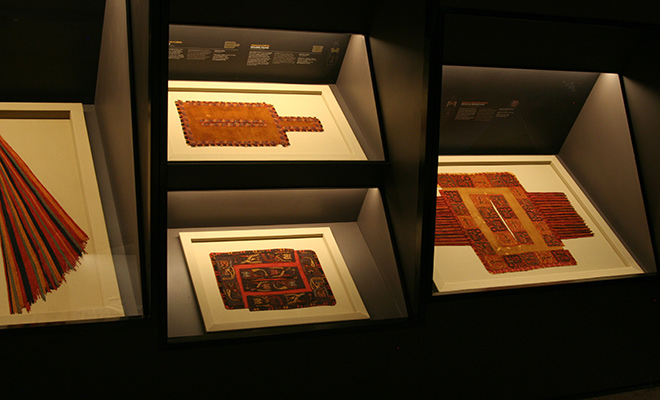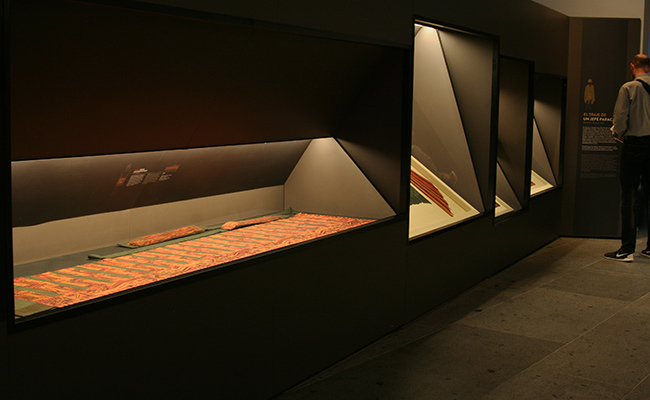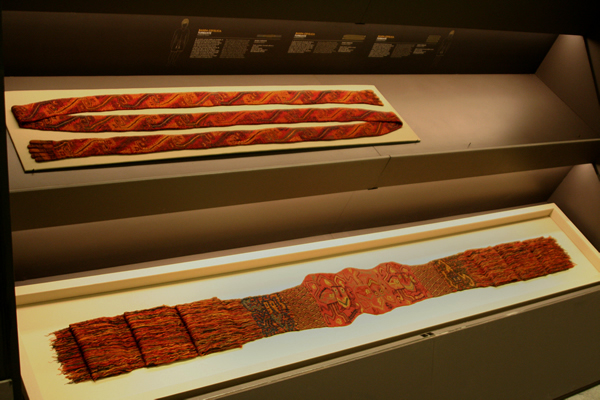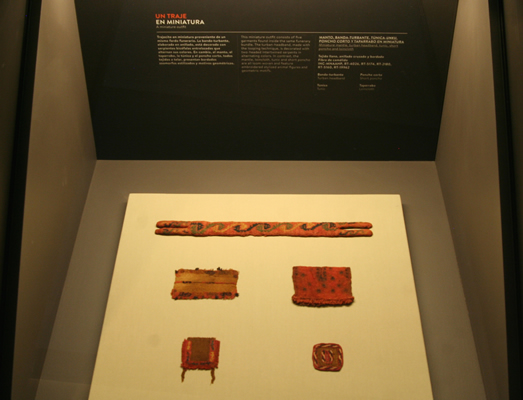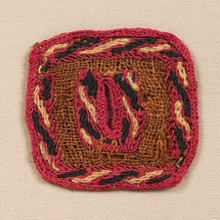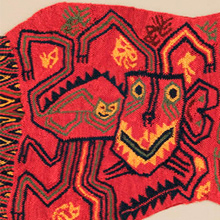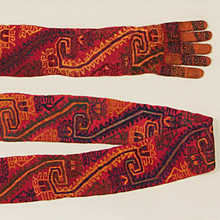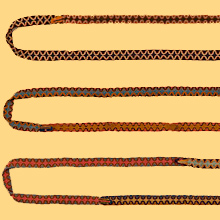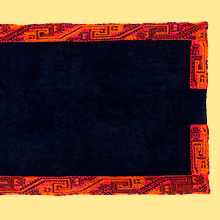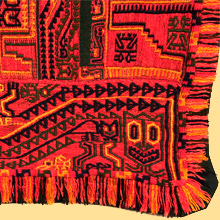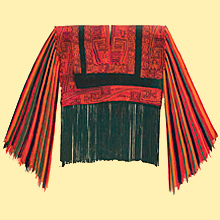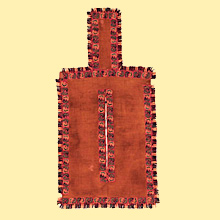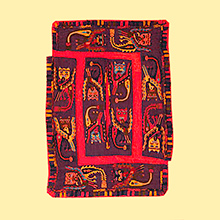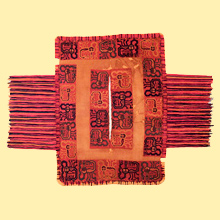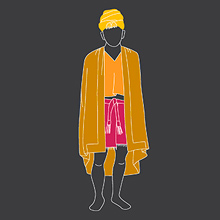Paracas Funerary Mantles: Offerings for Life – 2015
- Paracas funerary mantles: Offerings for Life
- Who Were The Paracas?
- The Wari Kayán Cemetery and Its discoverer
- What is a funerary bundle?
- Offerings for the Afterlife
- “Reading” the Images
- Severed heads, trophy heads
- Paracas textile art
- Three styles of embroidery
- A miniature outfit
- Headband: Turban I
- Headband: Turban II
- Headband: Turban III
- Turban-cloth: Two-headed serpents
- Skirt: Big-Eyed Being
- Uncu tunic with felines: Big-eyed Being
- Short poncho: Orcas
- Short poncho: Feline-Man
- Short poncho with fringes: Big-Eyed Being
- Attire of a Paracas chief
- Opening a funerary bundle from the Wari Kayán Necrópolis
- Mantles for the afterfile
- Bibliographic references
- Credits
Paracas textile art
Around the 6th century BC, textile decorative techniques multiplied on the southern coast of Peru and the combining of local cotton with camelid fiber increased, pointing to trading between coastal and mountain peoples. In Paracas, stylistic norms represented in the Paracas Cavernas tradition gave way to those of the Paracas Necrópolis tradition, which favored embroidery with needles. Using woven cloth as a canvas, this new practice enabled the creation of genuine polychromatic “paintings” with up to 190 different colors.
These textiles were used to wrap the bodies of the dead in funerary bundles, a custom that reached its peak during the Paracas Necrópolis period. They were also used as clothing, with the most elaborate items being reserved for the social elite, the nobility and priests.




































